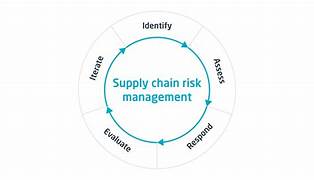Exploring the Three Best Strategies for Tackling Risks in Business Supply Chain Management
Introduction
Supply chain management is the backbone of modern businesses, ensuring seamless operations from production to delivery. However, supply chains are increasingly exposed to risks such as economic instability, natural disasters, cybersecurity threats, and geopolitical tensions. To maintain efficiency and resilience, businesses must adopt proactive strategies to mitigate these risks. This article explores three of the best strategies for tackling risks in business supply chain management: diversification, digital transformation, and strong supplier relationships.
1. Diversification: Reducing Dependence on Single Sources
One of the most effective ways to manage supply chain risk is through diversification. Over-reliance on a single supplier, region, or transportation route can be detrimental when disruptions occur. Diversification minimizes the impact of such disruptions and provides alternative pathways for business continuity.
Key Approaches to Diversification
- Multi-Supplier Strategy: Engaging multiple suppliers for key components reduces dependency on a single source and ensures continuity in case of disruptions.
- Geographical Diversification: Expanding sourcing and production across different regions minimizes the impact of localized risks such as natural disasters or political instability.
- Multiple Transportation Routes: Using different logistics providers and transportation modes (air, sea, rail, and road) helps mitigate risks like port congestion, strikes, or fuel shortages.
Benefits of Diversification
- Increased flexibility in responding to supply chain disruptions.
- Reduced reliance on any single supplier, minimizing exposure to localized risks.
- Enhanced bargaining power with suppliers due to competitive sourcing.
Challenges of Diversification
- Managing multiple suppliers requires greater coordination and oversight.
- Potential increase in costs due to investments in multiple logistics networks.
- Quality control becomes more complex with multiple sourcing locations.
2. Digital Transformation: Leveraging Technology for Supply Chain Resilience
Advancements in digital technology have revolutionized supply chain management. By integrating technology, businesses can enhance visibility, predict disruptions, and optimize decision-making processes.
Key Technological Solutions
- Artificial Intelligence (AI) and Machine Learning: AI-powered analytics predict supply chain disruptions and suggest alternative strategies in real-time.
- Internet of Things (IoT): IoT-enabled sensors monitor shipments, warehouse conditions, and equipment performance to prevent unexpected failures.
- Blockchain Technology: Blockchain enhances transparency and security by providing a tamper-proof record of transactions and movements.
- Cloud-Based Supply Chain Management Systems: These platforms enable real-time tracking of inventory, supplier performance, and logistics data.
Benefits of Digital Transformation
- Real-time monitoring and early warning systems help businesses respond proactively to disruptions.
- Improved efficiency through automation and predictive analytics.
- Enhanced transparency across the supply chain, reducing fraud and inefficiencies.
Challenges of Digital Transformation
- High initial investment in technology and training.
- Cybersecurity risks associated with increased data integration.
- Resistance to change from employees and existing supply chain partners.
3. Building Strong Supplier Relationships: Enhancing Collaboration and Trust
A strong relationship with suppliers is crucial for supply chain resilience. Companies that cultivate long-term partnerships with reliable suppliers can navigate risks more effectively through collaboration and mutual support.
Key Approaches to Strengthening Supplier Relationships
- Supplier Risk Assessment: Regularly evaluating supplier reliability, financial stability, and adherence to compliance standards.
- Collaborative Planning and Forecasting: Sharing demand forecasts and inventory data with suppliers to improve production planning and reduce stock shortages.
- Supplier Development Programs: Investing in supplier training and development to enhance their capabilities and reliability.
- Long-Term Contracts and Strategic Partnerships: Establishing long-term agreements with key suppliers ensures commitment and stability in supply.
Benefits of Strong Supplier Relationships
- Faster response times in case of disruptions, as suppliers prioritize long-term partners.
- Reduced supply chain costs through better coordination and bulk purchasing agreements.
- Greater innovation through joint product development and process improvements.
Challenges of Building Supplier Relationships
- Dependence on a limited set of suppliers can still create vulnerabilities if diversification is not balanced.
- Time-consuming process to build trust and establish collaborative frameworks.
- Risk of confidential data breaches when sharing sensitive business information.
Conclusion
Tackling risks in business supply chain management requires a multi-faceted approach that balances flexibility, technology, and collaboration. Diversification reduces dependency on single sources, digital transformation enhances real-time decision-making, and strong supplier relationships foster resilience and reliability. By implementing these three key strategies, businesses can mitigate risks, improve efficiency, and ensure long-term success in an increasingly complex global market.


